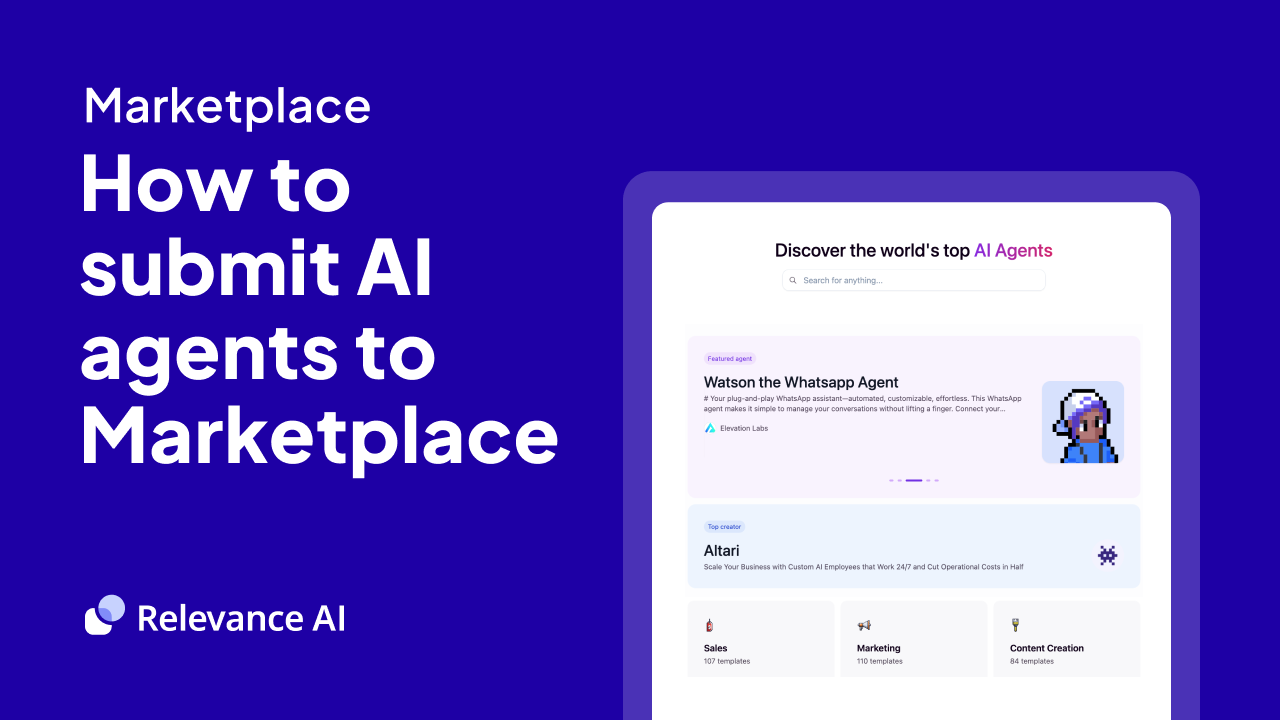Introduction
Artificial Intelligence (AI) in supply chain management refers to the use of smart technologies that can analyze data, make decisions, and automate processes across logistics, inventory, and distribution operations. These systems use machine learning and advanced algorithms to optimize how goods move from manufacturers to end consumers.This guide will teach you how to implement AI solutions in your supply chain operations, covering everything from basic automation to advanced predictive analytics. You'll learn practical steps for selecting AI tools, preparing your organization for implementation, and measuring success through concrete metrics and KPIs.Ready to transform your supply chain from reactive to predictive? Let's dive in and get those robots working for you! 🤖📦
Understanding AI in Supply Chain
Artificial intelligence represents a fundamental shift in how supply chains operate, moving beyond traditional software to systems that can learn, adapt, and make complex decisions. Unlike conventional programs that follow fixed rules, AI applications simulate human intelligence through sophisticated algorithms and neural networks.
Machine learning capabilities allow AI systems to continuously improve their performance by analyzing patterns in vast datasets. For example, when processing shipping manifests, AI can learn to identify optimal routing patterns while accounting for variables like weather, traffic, and seasonal demand fluctuations.
- Natural language processing for automated documentation
- Computer vision for quality control and safety monitoring
- Predictive analytics for demand forecasting
- Machine learning for route optimization
- Deep learning for complex decision-making
The transformation of warehouse operations showcases AI's practical impact. Smart robots equipped with computer vision navigate facilities autonomously, while AI algorithms optimize picking routes and inventory placement. One major retailer reported a 30% reduction in picking times after implementing AI-powered warehouse management.
Real-time monitoring and analysis have become possible through IoT sensors feeding data to AI systems. These networks can track everything from temperature fluctuations in cold storage to vibration patterns in manufacturing equipment, enabling predictive maintenance and quality control.
AI-Driven Supply Chain Planning and Forecasting
Modern supply chain planning requires processing enormous amounts of data from multiple sources. AI excels at this task, analyzing historical sales data, market trends, weather patterns, and social media sentiment to generate accurate demand forecasts.
- Demand sensing and shaping
- Inventory optimization
- Production scheduling
- Distribution planning
- Risk assessment
Machine learning models have revolutionized demand forecasting accuracy. By incorporating both structured data (sales figures, inventory levels) and unstructured data (social media trends, news articles), these systems can predict demand patterns with unprecedented precision. Leading retailers have reported forecast accuracy improvements of up to 50% using AI-powered systems.
Scenario planning becomes more sophisticated with generative AI. These systems can simulate thousands of potential scenarios, helping businesses prepare for various contingencies. For instance, a global manufacturer uses AI to model the impact of different supply chain disruptions, from natural disasters to geopolitical events.
Supply chain managers now leverage AI-powered dashboards that provide real-time visibility into operations. These interfaces combine data visualization with predictive analytics, enabling quick responses to emerging issues. One automotive company reduced its planning cycle time by 60% through AI-assisted planning tools.
Enhancing Supplier Management with AI
Artificial intelligence transforms supplier relationship management through advanced analytics and automation. Modern AI tools can analyze supplier performance across multiple dimensions, from delivery reliability to financial health, providing a comprehensive view of supplier capabilities.
- Automated supplier evaluation
- Risk monitoring and mitigation
- Contract analysis and optimization
- Price negotiation support
- Compliance monitoring
Smart contract analysis has become a game-changer in supplier management. AI systems can review thousands of contracts in hours, identifying potential risks and opportunities for optimization. A global electronics manufacturer saved $50 million annually by using AI to identify contract improvement opportunities.
Supplier selection processes have evolved with AI-powered scoring systems. These tools evaluate potential suppliers across hundreds of criteria, including:
- Financial stability indicators
- Quality metrics
- Environmental compliance
- Social responsibility scores
- Geographic risk factors
Relationship management becomes more proactive through AI-enabled monitoring. Systems can detect early warning signs of supplier issues by analyzing news feeds, financial reports, and social media. This allows procurement teams to address potential problems before they impact operations.
Optimizing Logistics and Inventory with AI
Transportation networks benefit from AI's ability to process real-time data and optimize routes dynamically. Modern systems consider multiple factors simultaneously:
- Traffic patterns
- Weather conditions
- Fuel costs
- Vehicle capacity
- Delivery windows
- Driver hours
Warehouse operations have been transformed by AI-powered automation. Smart robots and automated guided vehicles (AGVs) work alongside human workers, with AI systems orchestrating their movements for maximum efficiency. A major e-commerce company reported a 200% increase in picking efficiency after implementing AI-driven warehouse automation.
Inventory optimization reaches new levels of sophistication with AI analysis. These systems can:
- Predict stockout risks
- Recommend optimal reorder points
- Balance inventory across locations
- Identify slow-moving items
- Suggest promotional strategies
Real-time tracking and monitoring enable proactive inventory management. AI systems use computer vision and IoT sensors to maintain accurate inventory counts, while machine learning algorithms predict maintenance needs for storage equipment. This comprehensive approach has helped companies reduce carrying costs by up to 25%.
AI in Supply Chain Planning and Logistics
Supply chain optimization through AI has revolutionized how companies manage their logistics networks. By leveraging advanced algorithms and machine learning, businesses can now analyze vast amounts of data to optimize global trade routes and streamline distribution channels.
Modern logistics networks benefit tremendously from AI-powered dynamic route optimization. For example, delivery companies like UPS and FedEx use AI algorithms that consider real-time traffic patterns, weather conditions, and delivery priorities to continuously adjust delivery routes, reducing fuel consumption by up to 15% and delivery times by 20%.
Generative AI has transformed inventory management through sophisticated forecasting capabilities. These systems analyze historical data, seasonal trends, and market indicators to predict optimal stock levels with remarkable accuracy. Consider a retail chain that previously struggled with stockouts during peak seasons - after implementing AI forecasting, they reduced stockouts by 30% while decreasing storage costs by 25%.
The warehouse environment has been particularly transformed by AI applications:
- Automated guided vehicles (AGVs) navigate warehouse floors using AI vision systems
- Smart shelving systems that automatically track inventory levels
- Predictive analytics that optimize product placement based on order patterns
- AI-powered picking robots that work alongside human workers
AI in Manufacturing and Maintenance
The manufacturing sector has witnessed a dramatic transformation through AI integration. Product development cycles that once took months can now be completed in weeks through AI-assisted design and testing processes. This acceleration stems from AI's ability to simulate thousands of design iterations and predict performance outcomes before physical prototyping begins.
Predictive maintenance represents one of the most valuable applications of AI in manufacturing. Through continuous monitoring of equipment sensors, AI systems can detect subtle changes in machine performance that might indicate impending failure. A major automotive manufacturer implemented this technology and saw:
- 20% reduction in unexpected downtime
- 35% decrease in maintenance costs
- 15% improvement in overall equipment effectiveness
Machine learning models analyze vast amounts of sensor data to create detailed maintenance forecasts. These systems consider multiple variables including:
- Temperature variations
- Vibration patterns
- Power consumption
- Operating hours
- Historical failure data
The integration of AI into material science has led to breakthrough discoveries in manufacturing processes. By analyzing molecular structures and material properties, AI helps identify optimal materials for specific applications, reducing both costs and environmental impact.
AI for Supply Chain Transparency and Sustainability
Modern supply chains generate enormous amounts of data, which AI systems can process to provide unprecedented visibility into operations. Real-time tracking and monitoring capabilities allow companies to maintain complete oversight of their supply networks, from raw material sourcing to final delivery.
Sustainability tracking has become increasingly sophisticated through AI implementation. Consider this real-world example: A global fashion retailer uses AI to monitor its cotton supply chain, tracking:
- Water usage in farming
- Chemical application methods
- Labor practices
- Transportation carbon footprint
- Processing facility compliance
AI-powered blockchain solutions have emerged as powerful tools for ensuring supply chain transparency. These systems create immutable records of product journeys, making it impossible for bad actors to introduce counterfeit or unethically sourced materials into the supply chain.
Environmental compliance monitoring has been revolutionized by AI systems that can:
- Process satellite imagery to detect deforestation
- Monitor water quality near manufacturing facilities
- Track carbon emissions across transportation networks
- Verify sustainable farming practices
- Assess supplier adherence to environmental standards
Challenges and Considerations in AI Implementation
While AI offers tremendous potential, organizations face significant hurdles in implementation. The initial investment in AI technology can be substantial, requiring careful consideration of both direct and indirect costs:
- Hardware infrastructure upgrades
- Software licensing fees
- Data storage and processing capabilities
- Staff training and development
- System maintenance and updates
Data quality presents another critical challenge. AI systems require large amounts of clean, well-structured data to function effectively. Organizations must often undertake extensive data cleansing and standardization efforts before implementing AI solutions.
Security concerns have become increasingly prominent as supply chains become more digitized. Companies must balance the benefits of AI-driven insights with the need to protect sensitive information. This includes:
- Implementing robust cybersecurity measures
- Ensuring data privacy compliance
- Protecting intellectual property
- Securing communication channels
- Managing access controls
The human factor cannot be overlooked in AI implementation. Successful deployment requires careful change management and clear communication with employees about how AI will affect their roles.
Conclusion
Implementing AI in your supply chain represents a transformative journey that can dramatically improve efficiency, reduce costs, and enhance decision-making capabilities. To get started, focus on one specific pain point - for example, if inventory management is your biggest challenge, begin by implementing a simple AI-powered demand forecasting tool that analyzes your historical sales data and predicts future inventory needs. This targeted approach allows you to demonstrate clear ROI while building organizational confidence in AI solutions before expanding to more complex applications.Time to let the robots do the heavy lifting while you focus on the important stuff - like deciding what to do with all that extra time! 🤖💪 (Just don't let them read this part about world domination... 🤫)















